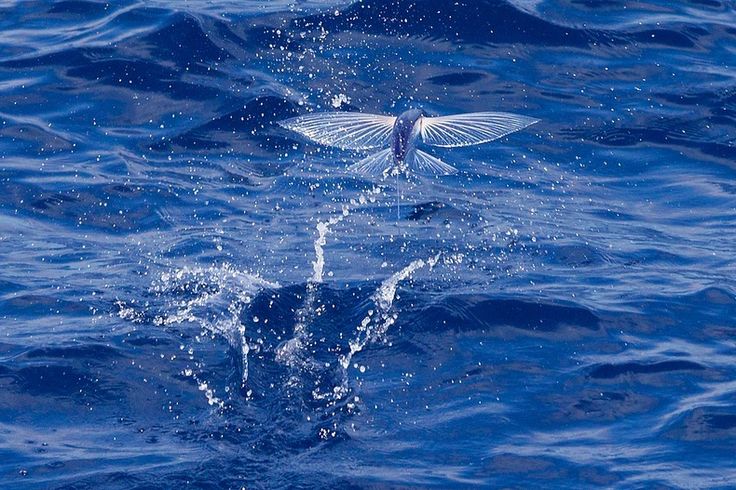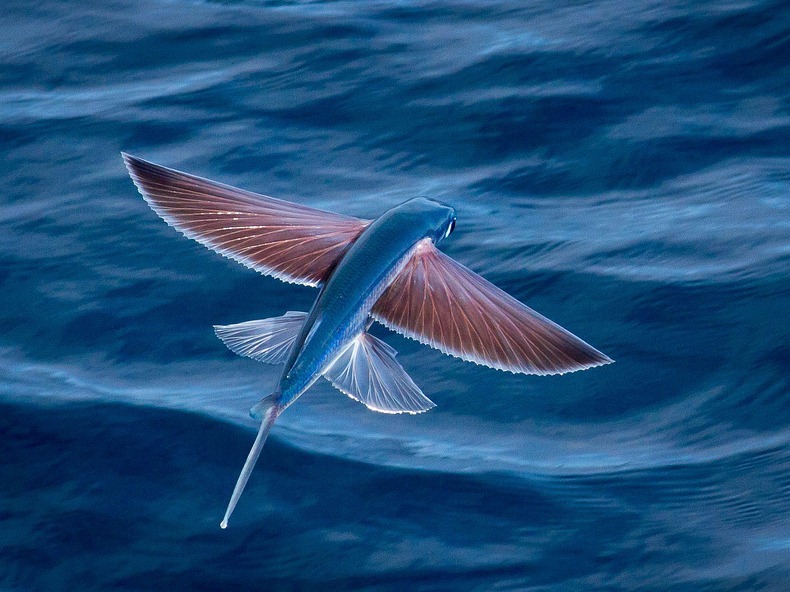Exocoetidae is a Fish That Flies, usually called Flying Fish; belongs to a family of fishes aptly. Its name derives from its ability to emerge out of the water and fly for long distances with its outstretched pectoral fins. Asian countries, like China, Vietnam, and Japan commercially fished flying fish. Including the Caribbean where it’s a coveted flimsiness. In much Japanese cuisine, the flying fish is used to make some sort of sushi.
Flying fishes are unique oceanic animals that use their tail and large, wing-like pectoral fins to launch themselves out of the water and glide through the air. Flying fish have long, broad wing-shaped fins that allow them to jump and glide long distances above the surface. Moreover, flying fishes for gliding, or pointed as in fast swimmers like tuna, or rigid, diving planes as in sharks. These flying fishes have the ability to fast swimming, predatory fish often have long, large dorsal fins.

It is also used in the diet of the Tao people of Taiwan. In Barbados, flying fish were heavily threatened by pollution and overfishing, changing the occurrences of flying fish in the waters off of Barbados. This sparked a fishing controversy between Barbados, and Trinidad and Tobago maneuverability. The ability of aquatic vertebrates to glide above the surface of the water has evolved in several groups of bony fishes.
Exocoetidae Fish That Flies are known as four-winged flying fish. Flying fish are thought to have evolved this extraordinary gliding ability to get away from predators, of which they have many. Their pursuers include mackerel, tuna, swordfish, marlin, and other larger fish. Unluckily, this elusive maneuver is not enough to escape the biggest predator on earth humans.
Their streamlined torpedo shape assists them to gather enough underwater speed to break the surface, and their large, wing-like fins get them airborne. Once in the air, these fishes can glide over considerable distances. Their flights are naturally around 50 meters, but some fishes have been recorded to fly up to 200 meters or even more.
Some species of flying fish have enlarged pelvic fins as well as enlarged pectoral fins, which let them fly further than two-winged gliders up to 400 meters, and have far greater To glide upward out of the water, a flying fish moves its tail up to 70 times per second. It then spreads its pectoral fins and tilts them to some extent upward to provide lift.

At the end of a glide, it folds its pectoral fins to reenter the sea or falls its tail into the water to push against the water to lift itself for another glide, possibly changing direction. The curved profile of the “wing” is comparable to the aerodynamic shape of a bird wing. The fish is recognized to take advantage of updrafts created by air currents to boost its time of flight.
Despite the superficial distinction of gliding, wing design, and flight performance differ sharply between flying fish and other vertebrate gliders. Other gliders are restricted mainly to trees. They fly by descending from a position in the trees higher than where they will be at the end of their glide.
Exocoetidae, Fish That Flies flight surfaces are more like parachutes than wings. The very low aspect ratios of such flight surface slow the animals’ rate of descent while preventing the onset of stall. The glide path is very steep. Flying fish have a shallow glide path at high speed.
Read More – The Semi-Transparent Flying Gurnard Fish / Lungfish A Fish Can Live Without Water and Food /The Snapping Turtles (Chelydra serpentina)






